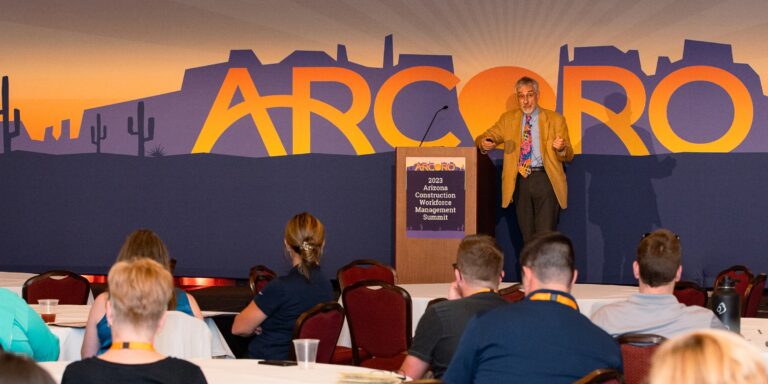With the economy firing on all cylinders and talent acquisition getting increasingly ruthless, many companies are evaluating their benefits as a tool to not only attract quality employees, but also retain the ones they have.
For both segments – candidates and current employers – a value-driven employee benefits management system can make the difference between losing a valued employee or prospect to a competing offer and landing or retaining them. Among the benefits leading the pack nationally:
- Paid family leave
- In-office policies like flextime, casual dress and mentoring
- Professional development
- A+ healthcare
- Financial support beyond a paycheck
For more, read our latest blog on the most desired employee benefits.
A list of benefits doesn’t fully answer the question of how to create a strong benefits package, though. To do that, you need to dig a little deeper into your employee base. Here are four things to consider before building a new benefits package.
Ask: What Can We Do to Strengthen Our Offerings?
The first step in creating a strong benefits package, though. To do that, you need to dig a little deeper into your employee base. Here are four things to consider before building a new benefits package.
- Investigate the market: Look at what others are doing, based on industry, location, company size and employer brand.
- Ask current employees: In a competitive job market, even the most loyal employees may feel like the grass could be greener on the other side. Ask your employees what types of benefits could turn their heads, or worse, entice them to jump ship for an otherwise comparable opportunity.
- Take a look at exit interviews: Why are employees leaving? Is there a common reason you hear?
Remember Your Employer Brand
Bringing dogs to work and offering shortened summer hours may be the rage in some industries, but before you implement these trends for your company, consider if it’s “on brand” for you. It’s OK to push boundaries, but remember to stay true to your company values and culture.
When you’ve nailed down your foundational principles, start looking at ways to create benefits that fit your values, your employees and your industry. For example:
- Professional development will help workers see they have a strong future with you and encourage them to stick around
- Flextime for office-based employees
- An HSA or tuition reimbursement program for employees
{{cta(‘8c9d57dc-031b-4508-9727-17e9f782b4ee’)}}
Keep All Generations in Mind
It’s common knowledge that Baby Boomers are exiting the workforce, and Gen X-ers, Millennials and Gen Z-ers are picking up the slack. But with four distinct generations in the workplace, different benefits will attract and retain different segments. Of course there will always be some crossover (generations are fluid, afterall), but here are the hot ticket items for each generation:
- Baby Boomers (1946-1964): Retirement. This includes matching contributions, financial counseling and lifestyle transitions like going part-time or contributing as a consultant.
- Gen X (1965-1979): This smallish generation has its eye on retirement and family leave – but not because of kids. Gen X is the newest “sandwich generation,” which means they’re often balancing work and care for aging parents. Consider flextime and Employee Assistance Programs (EAPs).
- Millennials (1980-1996): Paid family leave and flextime. Even the oldest Millennials (39 in 2019) may have young kids at home, and spending time with them is an escalating priority in our culture. Consider amping your paid parental leave – and not just for women – as well as creating more flexibility in and out of the workplace.
Gen Z (1997-2009): Yep, they’re here. And no, they’re not Millennials Lite. You’ll catch the eye of Gen Z with strategic offerings, like professional development, tuition reimbursement and even lifestyle allowances. Here’s a deeper look at a benefits package that will pull in Gen Z.
Millennials are more likely than Gen X-ers and Baby Boomers to say they would change jobs for a particular benefit or perk. The differences are most evident for items related to children, development, education and flexibility. – Gallup
Get Creative
Employee benefits often feel like a formal, established plan. But many organizations are finding that by expanding their definition of a traditional benefit, they’re able to not only increase their offerings, but also garner some positive press. Here are some interesting headlines we’ve seen lately:
- Backup Dependent Care: Starbucks partnered with Care.com to offer staff members backup childcare or adult care for a subsidized price of just $1 per hour for kids and $5 per hour for adults.
- Infants at Work: The Girl Scouts of Greater Iowa announced an infants at work plan, which allowed (and encouraged) parents to bring their zero to six-month-old babies to the workplace, so the transition for baby and parents would be easier.
- Student Loan Contributions & Retirement Savings: Abbott Laboratories is taking advantage of a new ruling from the IRS that allows companies to contribute to employees’ 401(k)s as a match for student loan payments.
Providing a “competitive” benefits package isn’t going to set you apart in a quick-moving, race-to-the-top hiring and retention atmosphere. To attract and retain, it’s time to up your offerings. One way to take the temperature of your employee base is to have a quality employee benefits management system. Take ours for a spin with a free demo.
You Might Also Like
- How to Create a Competitive Benefits Package
- Gen Z: Take a Look at Your Benefits Package
- 5 Reasons Your Employees Are About to Quit
{{cta(‘c0370643-6a75-4713-b0f2-ea31f325a068’)}}




